
Introduction
Have you ever dreamed of scaling rugged mountain faces without the need for advanced climbing skills? Enter the world of via ferratas. Translating to “iron path” in Italian, via ferratas offer a thrilling yet accessible way to explore vertical terrains while enjoying spectacular views. But what exactly is a via ferrata? Let’s dive into its history, types, benefits, risks, and the best practices for using one.
The Origins of Via Ferrata
The concept of via ferrata originated in the Italian Dolomites during World War I. Soldiers needed safe and efficient routes through mountainous regions, so they installed iron rungs, cables, and ladders into rock faces to traverse challenging terrain. These “iron paths” allowed troops to move supplies and personnel securely.
Over time, the idea evolved into a recreational activity, and via ferratas became a popular attraction for outdoor enthusiasts seeking the thrill of climbing without the technical barriers.
What is a Via Ferrata?
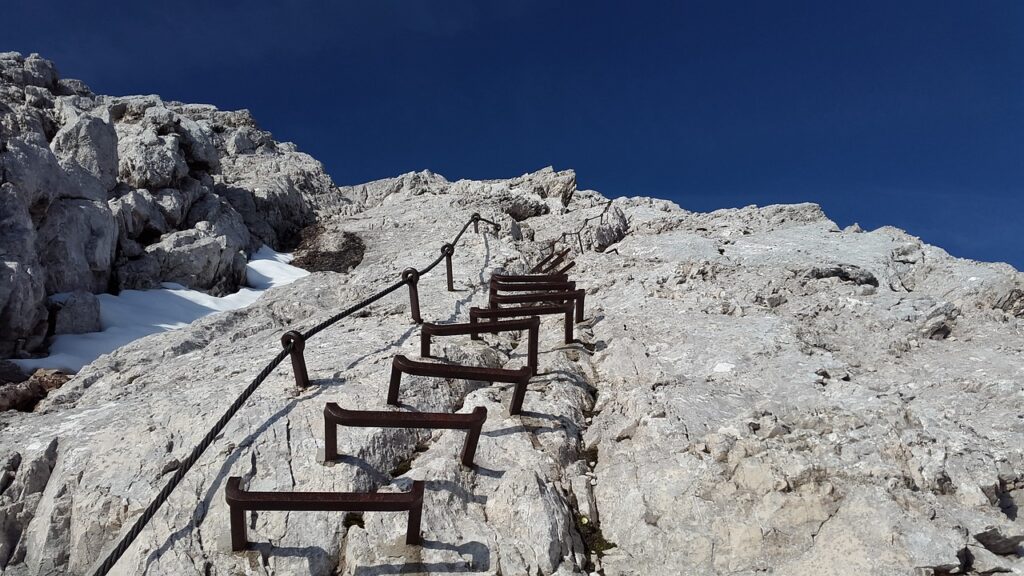
A via ferrata is a protected climbing route that combines fixed anchors—such as steel cables, rungs, and ladders—with natural rock formations. Participants are equipped with a specialized via ferrata lanyard system that secures them to the cables, allowing them to traverse steep or exposed areas safely.
How Does Via Ferrata Compare to Rock Climbing and Scrambling?
While via ferrata shares some similarities with rock climbing and scrambling (check out our guide on scrambling), there are key differences that make each activity unique:
- Technical Skill:
- Via Ferrata: Requires minimal climbing skills thanks to the fixed cables and rungs. It is more accessible to beginners.
- Rock Climbing: Involves using ropes, harnesses, and anchors for protection. Climbers rely heavily on their own strength and technique.
- Scrambling: Falls between hiking and climbing, typically unroped and requiring hand-and-foot coordination on steep terrain.
- Safety Systems:
- Via Ferrata: Participants are always attached to a steel cable using a lanyard system with carabiners, providing continuous protection.
- Rock Climbing: Climbers use dynamic ropes and belay systems to arrest falls.
- Scrambling: Generally lacks fixed protection, increasing the risk factor.
- Physical Demand:
- Via Ferrata: Moderate; the iron rungs and ladders reduce the need for advanced physical strength.
- Rock Climbing: High; requires significant strength, flexibility, and endurance.
- Scrambling: Varies; some routes can be as easy as steep hiking, while others demand near-climbing proficiency.
- Routes and Accessibility:
- Via Ferrata: Pre-set routes with fixed aids make it accessible to a wider audience.
- Rock Climbing: Requires detailed knowledge of routes, often with no fixed anchors.
- Scrambling: Often unmarked, requiring navigation skills and a good sense of balance.
Types of Via Ferrata
Via ferratas vary in difficulty and style, accommodating a wide range of skill levels. Here are the most common types:
- Classic Routes: These involve straightforward paths with iron rungs, ladders, and bridges, ideal for beginners.
- Sportive Routes: Designed for seasoned climbers, these include overhangs, challenging crossings, and fewer artificial aids.
- Adventure Routes: Incorporate unique features such as zip lines, suspension bridges, or tyroleans.
- Family-Friendly Routes: Specifically designed for children and families, these routes have lower heights and easier terrain.
Difficulty Levels
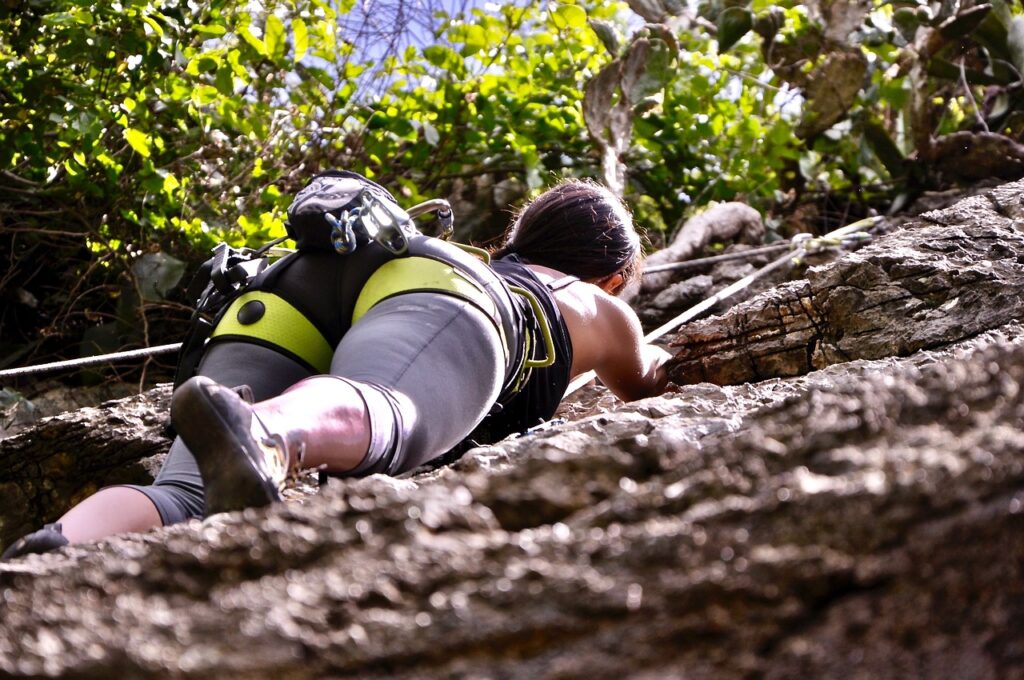
Via ferratas are classified using different grading systems depending on the region. Generally, they range from easy to extremely difficult:
- Easy (Grade A): Suitable for beginners; these routes have plenty of iron aids and minimal exposure.
- Moderate (Grade B-C): Require basic fitness and may include steeper sections or slightly exposed areas.
- Difficult (Grade D): Intended for experienced climbers, featuring vertical or overhanging sections.
- Extremely Difficult (Grade E-F): For advanced users only; these routes demand significant strength, endurance, and technical skill.
Essential Equipment
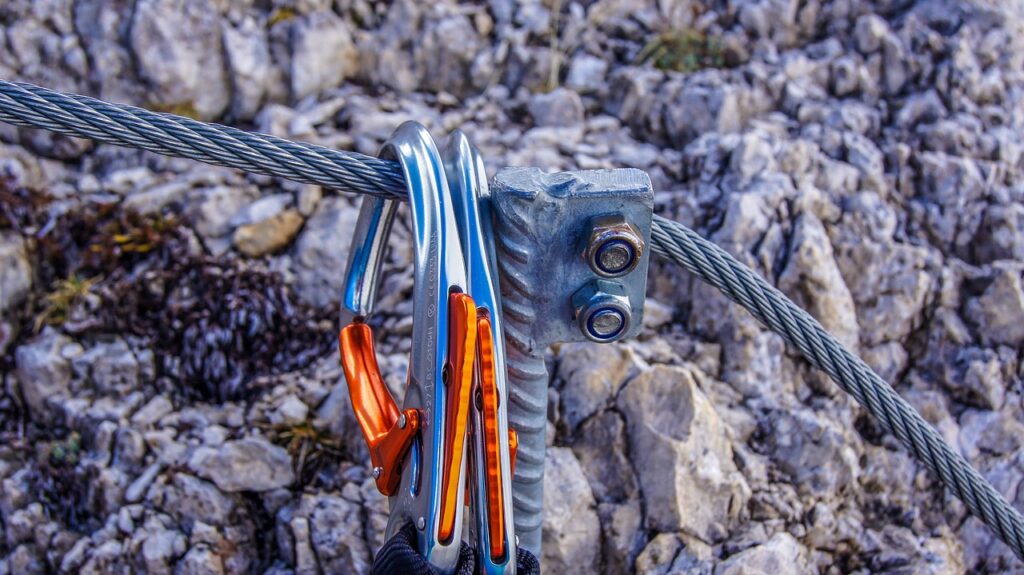
To ensure safety and enjoyment, proper gear is crucial when using a via ferrata. Here’s what you need:
- Harness: A climbing harness that securely fits around your waist and legs.
- Via Ferrata Lanyard Kit: Includes two carabiners attached to a shock-absorbing system to minimize impact in case of a fall.
- Helmet: Protects against falling rocks or accidental bumps.
- Gloves: Provide grip and protect your hands from abrasion.
- Sturdy Footwear: Hiking or approach shoes with good grip are ideal.
- Clothing: Wear weather-appropriate, flexible attire to allow ease of movement.
- Optional Extras: Items like a backpack, water, snacks, and a first-aid kit can enhance your experience.
Why Do People Use Via Ferratas?
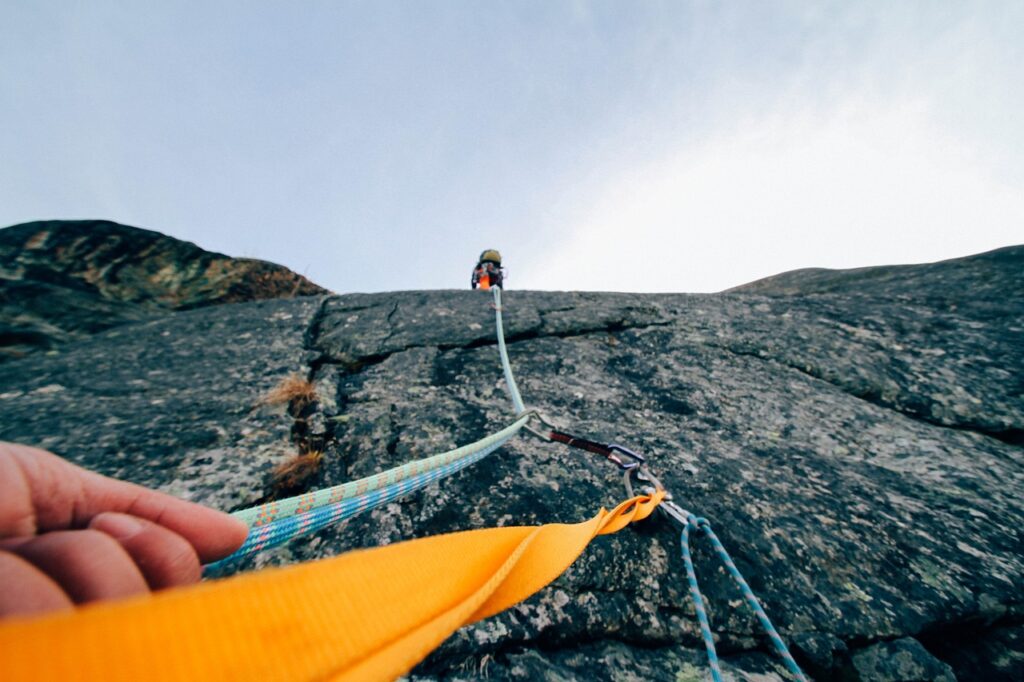
Via ferratas combine the thrill of climbing with the security of a protected route. They allow individuals with minimal climbing experience to access breathtaking landscapes typically reserved for advanced climbers. Enthusiasts use via ferratas for:
- Adventure and Adrenaline: The experience of scaling cliffs and crossing narrow ledges is exhilarating.
- Access to Stunning Views: Many via ferratas lead to panoramic vistas that would otherwise be inaccessible.
- Skill Development: They serve as an entry point for individuals interested in mountaineering or climbing.
The Risks of Using Via Ferratas
While via ferratas are designed to enhance safety, they are not without risks. Common hazards include:
- Falls: Improper use of equipment or losing footing can lead to accidents.
- Weather Conditions: Rain, snow, or strong winds can make routes slippery and dangerous.
- Overcrowding: Popular routes may become congested, increasing the risk of accidents.
- Equipment Failure: Using inappropriate or poorly maintained gear can compromise safety.
The Role of Guides
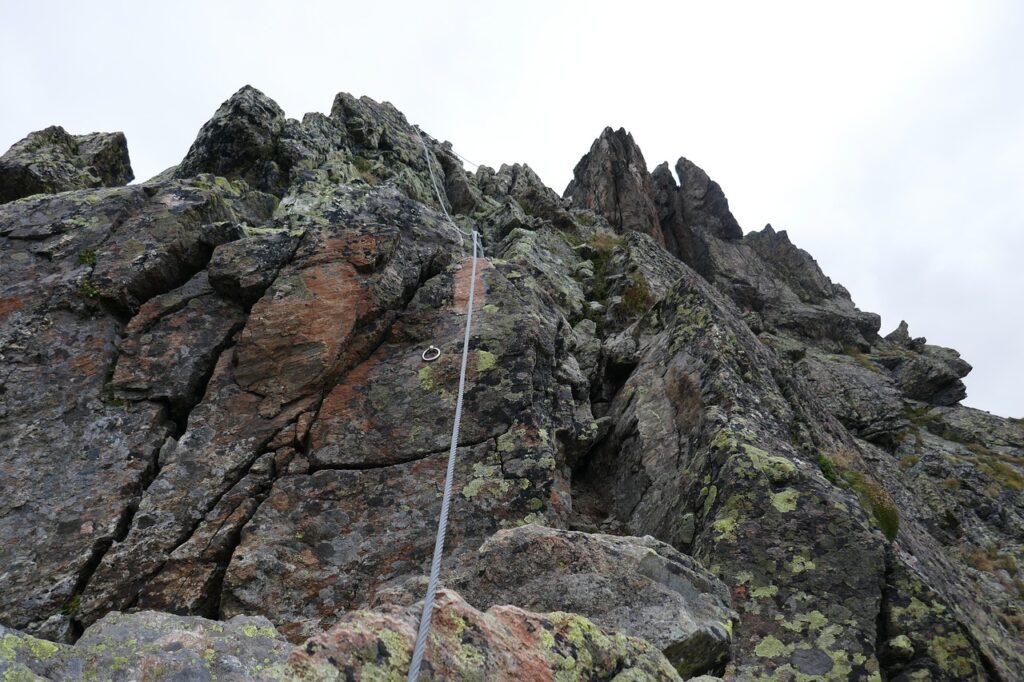
Having a guide is highly recommended, especially for beginners or when navigating complex routes. Guides provide:
- Technical Expertise: They ensure proper use of equipment and demonstrate techniques.
- Route Knowledge: Familiarity with the terrain helps avoid unexpected challenges.
- Safety Assurance: Guides can assess weather conditions and offer real-time support.
Where Are Via Ferratas Found?
Via ferratas are most commonly found in mountainous regions. Some of the best-known locations include:
- Italy: The Dolomites remain the birthplace and hub of via ferratas.
- Austria: Famous for scenic routes like the Kaisergebirge.
- France: Particularly in the Alps, with routes like La Clé de Sol.
- Switzerland: Stunning routes around the Jungfrau region.
- North America: Emerging locations in the Rockies and Sierra Nevada.
How to Use a Via Ferrata

Proper preparation and technique are essential for a safe and enjoyable experience. Here are the key steps:
- Gear Up: Use a certified via ferrata kit, including a harness, helmet, and a via ferrata lanyard with shock absorbers.
- Learn the Basics: Familiarize yourself with clipping and unclipping carabiners to the safety cable.
- Stay Attached: Always maintain at least one carabiner connected to the cable.
- Follow the Route: Adhere to marked paths and avoid straying into unsecured areas.
- Pace Yourself: Take breaks as needed and ensure stable footing before moving.
- Communicate: Signal to others when overtaking or encountering narrow sections.
Frequently Asked Questions
1. Do I need climbing experience? No, most via ferratas are designed for beginners, though some routes require advanced skills.
2. What should I wear? Wear sturdy shoes with good grip, weather-appropriate clothing, and gloves for hand protection.
3. Can children use via ferratas? Yes, but ensure the route is family-friendly, and children are equipped with appropriate gear.
4. Is there an age limit? There’s no universal age limit, but physical fitness and route difficulty should be considered.
Conclusion
Via ferratas offer an incredible mix of adventure, challenge, and scenic beauty. Whether you’re a seasoned climber or a first-timer, these “iron paths” provide a unique way to experience the great outdoors. By understanding the risks, following best practices, and perhaps enlisting the help of a guide, you can enjoy a safe and unforgettable journey along these thrilling routes.
